





Prozerin
Application instruction:
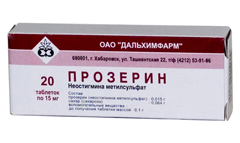 Prozerin – the synthetic inhibitor of cholinesterase recovering neuromuscular conductivity, urezhayushchiya heart rate, increasing secretion of glands (salivary, digestive tract, stalemate and bronchial), increasing acidity of a gastric juice, narrowing the pupil causing the accommodation spasm reducing intraocular pressure, strengthening a tone of smooth muscles and bladder, the defiant spasm of bronchial tubes toning skeletal muscles.
Prozerin – the synthetic inhibitor of cholinesterase recovering neuromuscular conductivity, urezhayushchiya heart rate, increasing secretion of glands (salivary, digestive tract, stalemate and bronchial), increasing acidity of a gastric juice, narrowing the pupil causing the accommodation spasm reducing intraocular pressure, strengthening a tone of smooth muscles and bladder, the defiant spasm of bronchial tubes toning skeletal muscles.
Form of release and structure
- Tablets: a ploskotsilindrichesky form, white color, with a facet (on 10 pieces in blister strip packagings, 2 packagings in a pack cardboard);
- Solution for injections: colourless transparent liquid (on 1 ml in ampoules of neutral glass, on 10 ampoules with an ampoule knife or the scarificator in a cardboard pack or on 5 ili10 ampoules in a blister strip packaging, 1 or 2 packagings with an ampoule knife or the scarificator in a pack cardboard; if ampoules with a point of a break or a ring of a break are used the ampoule knife / scarificator does not invest in packaging);
- Solution for intravenous (in/in) and hypodermic (п / to) introductions: colourless transparent liquid (on 1 ml in ampoules, on 10 ampoules with the ampoule scarificator in a pack cardboard or on 5 ampoules in blister strip packagings, on 2 packagings with the ampoule scarificator in a pack cardboard).
Active agent – a neostigmina methyl sulfate (прозерин):
- 1 tablet – 15 mg;
- 1 ml of solution for injections – 0,5 mg;
- 1 ml of solution for in/in and п / to introduction – 0,5 mg.
Auxiliary components of tablets: potato starch, calcium stearate monohydrate, sucrose (sugar).
Additional substance of injection solutions: water for injections.
Indications to use
For all dosage forms of Prozerin:
- gravis myasthenia;
- Paralyzes;
- Motive disturbances after a brain injury;
- The recovery period after the postponed encephalitis, poliomyelitis, meningitis.
In addition for injection solutions:
- Atony of digestive tract and bladder (prevention and treatment);
- Neuritis;
- Weakness of patrimonial activity (for stimulation);
- Muscular weakness and respiratory depression (as an antidote after anesthesia with use of not depolarizing muscle relaxants);
- Atrophy of an optic nerve.
Contraindications
For all dosage forms:
- Epilepsy;
- Arrhythmias;
- Bradycardia;
- Stenocardia;
- Coronary heart disease;
- Vagisection;
- The expressed atherosclerosis;
- Hyperkinesias;
- Thyrotoxicosis;
- Bronchial asthma;
- Infectious diseases in the acute period;
- Prostate hyperplasia;
- Mechanical obstruction of digestive tract and urinary tract;
- Peritonitis;
- Peptic ulcer of a stomach and 12-perstny gut;
- Pregnancy;
- Lactation;
- Hypersensitivity to drug components.
In addition for tablets:
- Deficit of invertase/isomaltase, glyukozo-galaktozny malabsorption, intolerance of fructose;
- Age up to 18 years.
Route of administration and dosage
In the tableted form Prozerin appoint inside (for half an hour to food), in the form of solution for injections – enter subcutaneously, intramusculary or intravenously, in the form of solution for in/in and п / to introduction – intravenously or subcutaneously.
The recommended schemes of use for adults depending on indications:
- Myasthenia: a single dose inside – 15 mg, daily – 50 mg. Treatment of a disease long (25-30 days) with change of ways of use of drug, the most part of a daily dose in the form of tablets is appointed in the afternoon when the patient is most fatigue. At myasthenic crisis at adults Prozerin enter intravenously (with solution of sodium of chloride of 0,9%) in a dose of 0,25-0,5 mg, further – subcutaneously in usual doses with small breaks. For strengthening of effect of drug if necessary in addition enter п / to solution of ephedrine of 5% (1 ml);
- Motive disturbances owing to injuries of the central nervous system, encephalitis and meningitis, at paralyzes of a facial nerve: inside on 15 mg 1-2 times a day within 2-3 weeks;
- Motive disturbances owing to poliomyelitis (in a complex with physical therapy, remedial gymnastics, balneological treatment and other actions): inside on 15 mg of 1 times a day daily or every other day. The course of treatment consists of 15-20 doses. Bucketed 2-3 months conduct repeated courses;
- Stimulation of childbirth: п / to in a dose of 0,5 mg, if necessary in 1 hour introduction is repeated. With the first dose once enter 1 mg of 0,1% of solution of atropine п / to;
- Stopping of action of not depolarizing muscle relaxants: at first enter atropine in/in in a dose of 0,5-0,7 mg, in 1-2 minutes (when pulse becomes frequent) enter into 1,5 mg of Prozerin. At insufficiency of effect enter repeated doses, but no more than 5-6 mg of a neostigmin of methyl sulfate within 20-30 minutes. During the procedure provide adequate ventilation of the lungs;
- Prevention of a postoperative atony of intestines and bladder (including postoperative ischuria): п / to or in oil 0,25 mg in a dose as soon as possible after operation, further – each 4-6 hours in the same dose within 3 days;
- Treatment of an ischuria: п / to or in oil 0,5 mg in a dose. If within 1 hour the diuresis is not recovered, do catheterization for bladder emptying. Further the drug is administered by each 3 hours, all – 5 injections.
To children drug is appointed only at a myasthenia гравис, treatment is carried out only in the conditions of a hospital. The drug is administered п / to or in oil 0,05 mg in a dose for 1 year of life a day, but by no more than 0,375 mg for 1 injection. As a rule, the daily dose is entered once, but if necessary can be divided into 2-3 injections.
Side effects
- From cardiovascular system and blood (a hemopoiesis, a hemostasis): bradycardia, arrhythmia, tachycardia, a nodal rhythm, an atrioventricular block, a syncope, nonspecific changes on the electrocardiogram, a lowering of arterial pressure (it is preferential at parenteral administration), a cardiac standstill;
- From a nervous system and sense bodys: weakness, drowsiness, loss of consciousness, headache, вертиго, dysarthtia, vision disorder, miosis, spasms;
- From respiratory system: an asthma, strengthening of bronchial and pharyngeal secretion, a bronchospasm (it is preferential at parenteral administration), respiratory depression up to a stop;
- From the alimentary system: meteorism, nausea, vomiting, diarrhea, spastic reduction and strengthening of a vermicular movement of intestines, hypersalivation;
- Allergic reactions: rash, itch, hyperemia of the person, anaphylaxis;
- Others: spasms and twitchings of skeletal muscles (including fastsikulyation of muscles of language), tremor, arthralgia, spasms, plentiful sweating, increase of an urination.
To remove side effects, reduce Prozerin's dose or stop its use. If there is a need, enter a metotsiniya iodide, 0,1% solution of atropine or other holinoblokator.
Special instructions
During treatment it is necessary to be careful at the driving of the car and performance of work demanding the speed of reactions and special attention.
If during therapy there is myasthenic or cholinergic crisis (owing to an insufficient therapeutic dose or overdose respectively), it is necessary to carry out careful differential diagnosis because of similarity of symptomatology.
Medicinal interaction
At a myasthenia Prozerin appoint in a combination with anabolic hormones and glucocorticosteroids.
Novokainamid, quinidine, local anesthetics, ganglioblokator (Pachycarpinum hydroiodide), m-holinoblokatory (including homatropine hydrobromide, a metotsiniya iodide, Platyphyllinum and atropine) weaken m - cholinomimetic effects of drug (are his pharmacological antagonists) that is shown by strengthening of motility of digestive tract, hypersalivation, narrowing of a pupil, bradycardia, etc.
With care Prozerin it is necessary to apply along with cholineblockers, at patients with a myasthenia – along with Kanamycinum, Neomycinum, streptomycin and other antibiotics which have the anti-depolarizing effect, and also with antiarrhytmic drugs, local anesthetics, means for the general anesthesia and other medicines breaking cholinergic transfer.
Neostigmina methyl sulfate – the antagonist of not depolarizing muscle relaxants (including Tubocurarini chloridum, a bromide rokuroniya, an atrakuriya of a bezilat) recovering neuromuscular conductivity. When after the termination of anesthesia using not depolarizing muscle relaxants muscular weakness and respiratory depression remain, Prozerin use as an antidote of these means.
Prozerin pharmacological is incompatible with the depolarizing muscular relaxants (for example, succinylcholine iodide).
The cyanocobalamine applied in high doses weakens action of a neostigmin of methyl sulfate.
Prozerin reduces activity of a pyridoxine.
As well as all inhibitors of cholinesterase, Prozerin in a combination to laxatives strengthens their action, with strychnine – considerably raises a tone of a vagus nerve.
Antiarrhythmic drugs (β-adrenoblockers)))))))))) and a neostigmina methyl sulfate are synergists (bradycardia is aggravated).
Prozerin is well combined: at cardiovascular frustration – with Nikethamidum, at neuritis – with thiamin, at muscular dystrophies – from calcium a gluconate and adenosinetriphosphate.
Ephedrine exponentiates action of a neostigmin of methyl sulfate therefore it is entered together with Prozerin at myasthenic crises.
Terms and storage conditions
To store in the place, dry, dark, unavailable to children.
Period of validity:
- Tablets – 5 years at a temperature up to 25 °C;
- Solution for injections – 4 years at a temperature of 15-25 ºС;
- Solution for in/in and п / to introduction – 4 years at a temperature of 18-25 ºС.
Name of drug
Price
Drugstore
Prozerin solution for infection 0.05% of amp of 1 ml No. 10 *, Novosibkhimfarm (Novosibirsk)
67 rub.
 Network of the Moscow drugstores of IFC
Network of the Moscow drugstores of IFCThe 74-year-old resident of Australia James Harrison became blood donor about 1000 times. It has a rare blood group which antibodies help to survive the newborn with a severe form of anemia. Thus, the Australian saved about two million children.
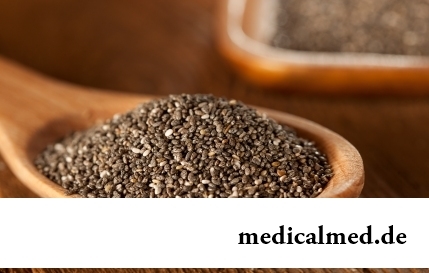
The chia plant, or the Spanish sage, is from South America. The indigenous people of the continent since ancient times used in food it семена:...
Section: Articles about health
The person, as well as all other beings living on our planet feels weather changing. It is the normal meteosensitivity which is not causing to healthy people of special troubles. Meteodependence, on the contrary, is morbid condition, характеризующимс...
Section: Articles about health
Tea is loved and use almost everything. This drink has tonic properties, contains the tannins capable to suppress activity of causative organisms. Recently great popularity was gained by teas with vegetable additives. The medicative herbs, spices and fruit which are a part of such mixes enrich drink with vitamins and microelements, increasing its nutritional value and creating additional curative effect....
Section: Articles about health
The pancreas performs two functions in a human body: release of enzymes without which digestion carbohydrate is impossible...
Section: Articles about health
What is in our understanding weeds? It plants which are considered to be suitable only for compost pits and feeding of animals. Meanwhile, among the weeds growing literally under legs it is possible to find the mass of the officinal herbs possessing invaluable Paul...
Section: Articles about health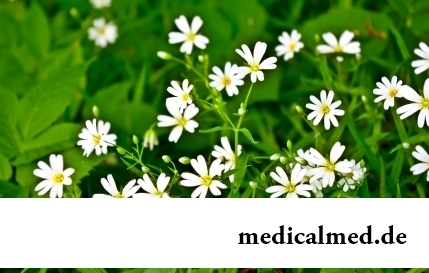
Wood louse – the ordinary-looking unpretentious plant extended in all territory of our country. It quickly expands, and sometimes fills sites, bringing a lot of chagrin to gardeners. Perhaps, they would be upset less if knew that the wood louse is valuable medicinal raw materials. A, C and E vitamins, organic acids, tannins, wax, saponins, lipids, mineral salts and essential oils are its part....
Section: Articles about health
All like to sing. Small children with pleasure are engaged in a vocal, not especially thinking of hit in a melody. Adults most often...
Section: Articles about health
High temperature - a frequent symptom of such widespread diseases as a SARS, quinsy, pneumonia, etc. To reduce heat, having facilitated a condition of the patient, doctors recommend to accept antipyretics, however their use is not always possible. Too h...
Section: Articles about health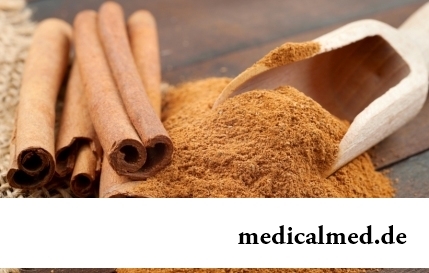
Ayurveda - the most ancient tselitelsky practice which came to us from India. It represents the doctrine about maintenance of physical, psychological and moral health of the person by means of the complex of procedures including a diet, cleaning of an organism, breathing exercises, massage, and in case of a disease - and medicinal therapy. The healers practicing Ayurveda assign very important part to spices, and at the heart of Ayurvedic drugs, as a rule, there are they. It is considered that spices not of t...
Section: Articles about health
Almost each of us during life faced dissatisfaction with own body. At such moments, as a rule, we beginning...
Section: Articles about health
The summer of this year in Russia was very ambiguous. Regions suffered from a merciless heat, from pouring rains, the hail from time to time dropped out, then there was again a heat which alternated with rainfall again. Many people suffer from such sharp changes of weather...
Section: Articles about health
The mankind knows that some toxins at intake in the minimum quantities have therapeutic effect from an extreme antiquity. Many substances recognized poisonous are applied in the medical purposes also today, being the main operating components of the medicines which are officially produced by pharmaceutical industry. Let's tell only about the most known of them....
Section: Articles about health
Very often as a source of the infection which caused a disease serves our house - the place which a priori has to be safe. However...
Section: Articles about health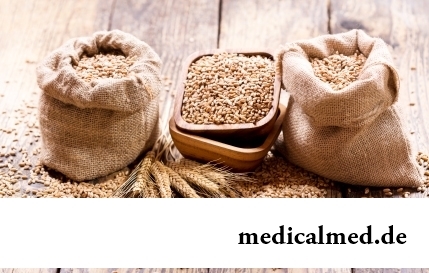
The concept "gluten" (differently, a gluten) combines group of the proteins which are a part of rye, barley and wheat. For most of people the use of the food stuffs containing a gluten not only is safe, but also it is very useful. Nevertheless, there is a number the myth...
Section: Articles about health
No, probably, the person who would not have cold. Cold, cough, a headache – these symptoms are known to everyone. The peak of catarrhal diseases is the share of fall. SARS already came to schools and kindergartens, flu slowly makes the way to the cities, in a word, winter close!...
Section: Articles about health
Radiological methods of a research are applied in medicine more than hundred years, and thanks to them millions of lives were saved. In m...
Section: Articles about health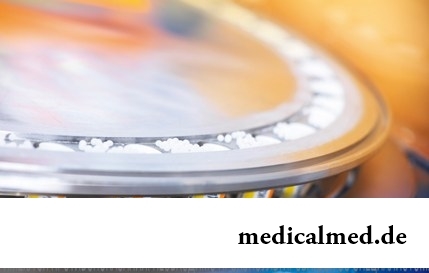
For the help to doctors in the choice of optimal solutions for treatment of various diseases the Cochrane scientific organization (Cochrane) conducts joint researches with representatives of scientific community around the world. The analysis of a series became carried out by one of the last methanolyses...
Section: Articles about health
The kid who was recently born is surrounded with love of adult family members and their cares without which the baby cannot exist. Some parents consider that gentle attachment and caress are quite enough that the child correctly developed and was happy, but it not so. It is important to know as much as possible about specifics of care of the baby, the reasons of his behavior and possible problems. Only the "able to see" love will provide to the little man that it is necessary for him....
Section: Articles about health
Each of us faces from time to time that other people need the immediate help. We react to it on-raznomu:...
Section: Articles about health
Shops of household appliances offer us the huge choice of various devices for the house. Whether there are among this abundance devices which not only facilitate house work, but also help to keep health of the person? Of course, and we will tell about them today....
Section: Articles about health
The advantage of swimming for the person is so high that this sport is not only the most popular, but also is widely applied in medicine and rehabilitation processes. If you look for for yourself the occupation allowing pleasantly and to spend time, then swimming with advantage – the fact that it is necessary for you. And give learns several facts about swimming....
Section: Slideshow
The way of life of people promptly changes from year to year: if about ten years ago the personal computer was not in each family...
Section: Articles about health
The thought that the mass of their body is too big at least once in life visits from 80 to 95% of women. Many women are so obsessed with this idea that constantly try all new and new ways of weight reduction. Considerable part of these method...
Section: Articles about health
Statistically, at the address to doctors seven of each ten patients complain of a headache. Actually it is much more people who are periodically feeling unpleasant feelings such. Many people, apart from a headache the reason for serious fears, prefer to muffle independently the next attack medicines. Such behavior is extremely careless, especially if this symptom appears regularly and is followed by other signs of an indisposition. Constants head Bol...
Section: Articles about health
Some people consider what for medicine of the 21st century of secrets in the field of health of the person almost does not exist. It absolutely not so. Than Bol...
Section: Articles about health
The Genetically Modified Organisms (GMO) are plants or animals (as a rule, agricultural) to whose genotype purposeful changes were made. Opposition of supporters and opponents of inclusion of such organisms in foodstuff всег...
Section: Articles about health
Cold – a state known to everyone which is followed by cold, cough, high temperature, a pharyngalgia. Often the first that we begin to do in hope again to become healthy – to accept medicines which are not always harmless whereas it is easy to facilitate displays of a disease by means of natural means. They not only softly eliminate disease symptoms, but also enrich the weakened organism with useful substances. We present you 8 drinks which are successfully used for...
Section: Articles about health
